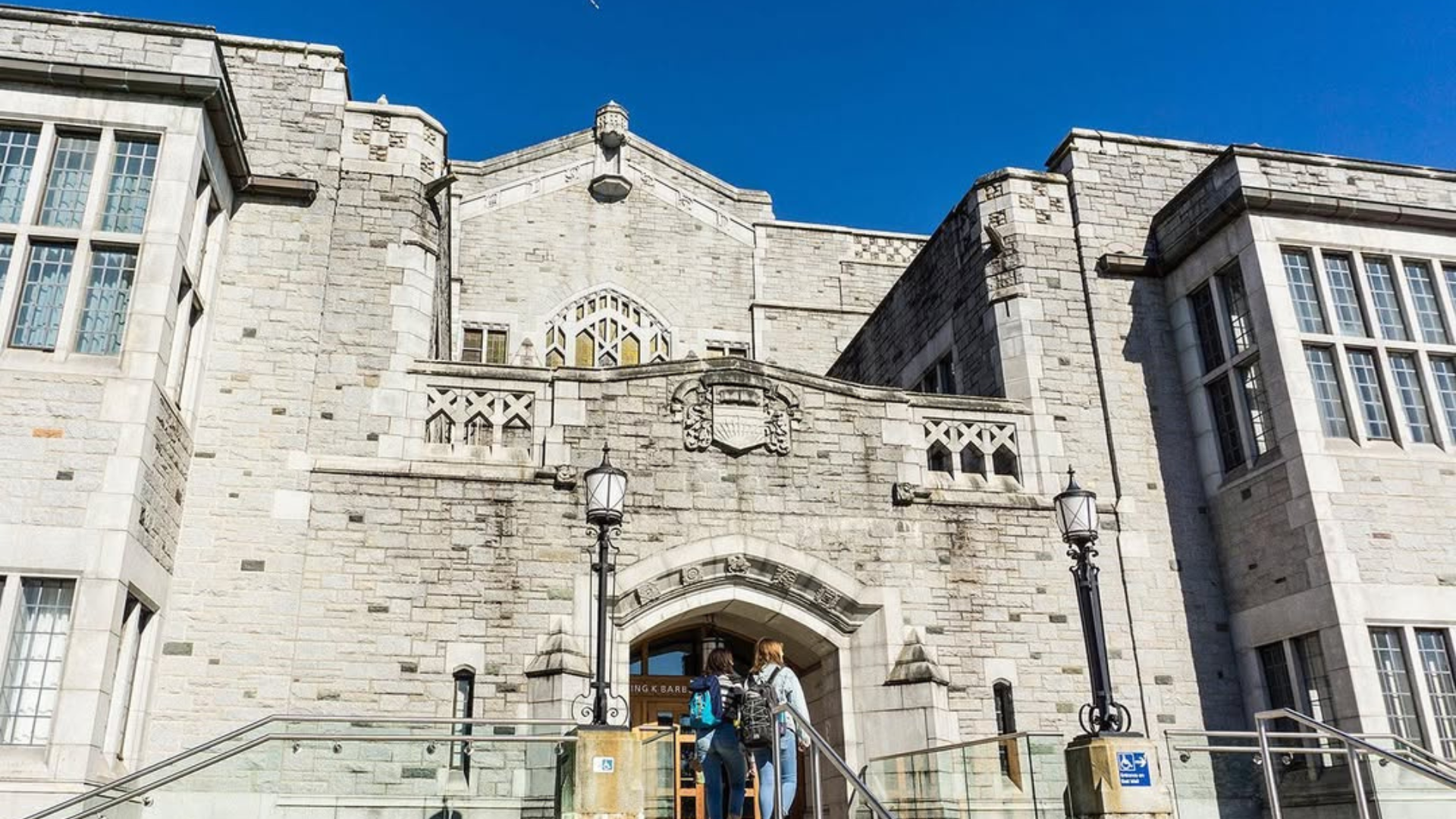How does legislative language influence our understanding of genetic codes and biotechnology? How do we think through the rhythm in poetry, in human kinetics and movement, in visual and sound art, and in deep ecology? And, is a hotdog a sandwich?
Whether it’s in Medieval texts, your course readings, or rapidly evolving internet slang, language and literature shape how we relate to each other and to the world. Curious where your words can take you? Register for these courses taught by innovative and engaging instructors in the Department of English Language & Literatures and get ready to expand your world.
You can find all the department’s 2022/2023 course offerings here.
ENGL387 (THEORY: Bodies) Body Rhythms: Pulse, Surge, and Flow
A colour-manipulated close-up of the palm of a hand. Image by Kevin McNeilly.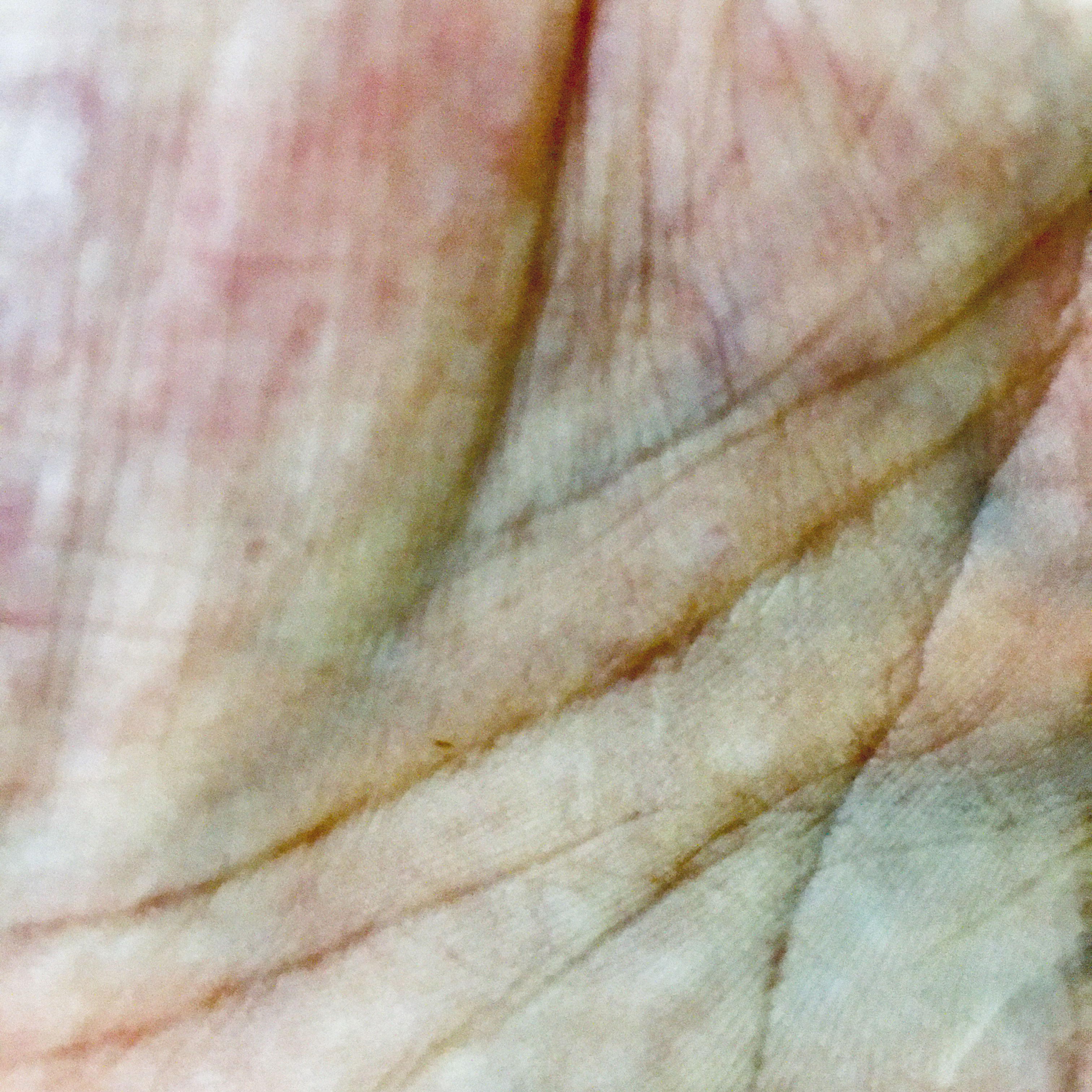

Instructor: Dr. Kevin McNeilly
Dr. Kevin McNeilly

Why did you choose this image to represent the course?
The image is a colour-manipulated close-up of the palm of a hand. The enhanced striations suggest both blood flow and bruising, as well as abstract pattern: interstitial strata and visual rhythms. In this course, we will begin to think through the complex, primal work of rhythm in poetry, in human kinetics and movement, in visual and sound art, and in deep ecology.
Why are you excited to teach the course?
How are our bodies constituted rhythmically, by temporally-marked flows and surfaces? Thinking and writing that engages with literary and cultural theory can sometimes seem daunting and challenging: this course is designed as an introduction to theoretical work using practice-based and creative modes of scholarship, to enable and encourage students to think carefully, artfully, and rigorously about the body and about the nature of rhythm.
What can students expect from the course?
We will focus on four primary units: flows—scansion and embodiment; footfalls—walking and thinking; eardrums—percussion and listening; deep time—historicity and the Anthropocene. Don’t worry if you don’t recognize some of these terms: the idea in this course is to uncover, to investigate, and to unsettle. Assignments will include a close reading, a final paper or project, a sound-walk audio podcast, and a creative response to one of the core concepts on the course.
ENGL 229 Introduction to Cognitive Linguistics
DALL-E mini is an AI program that generates images. This is what it creates when asked to produce a prototypical bird.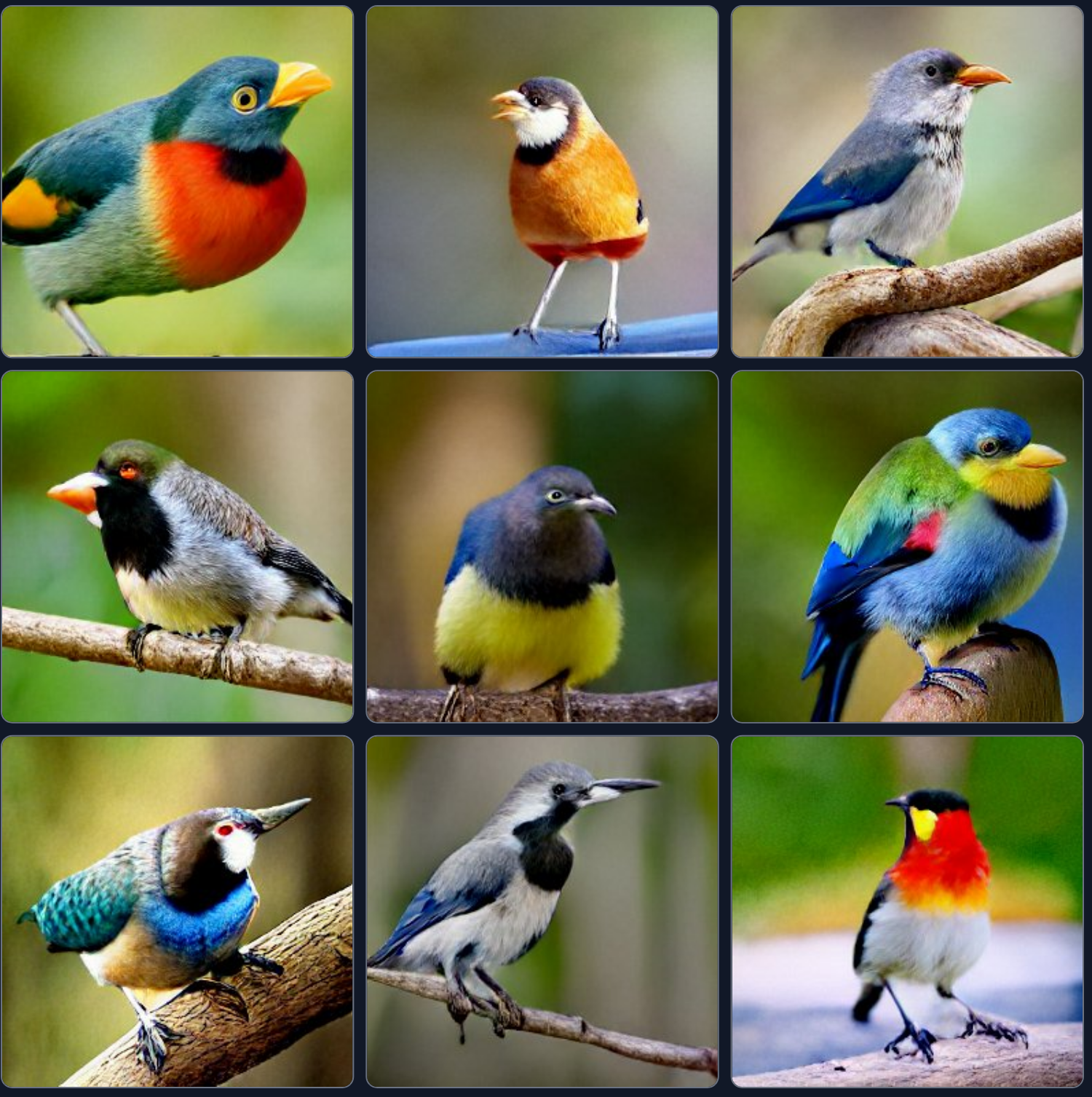

Instructor: Dr. Elise Stickles
Dr. Elise Stickles

Why did you choose this image to represent the course?
DALL-E mini is an artificial intelligence program that generates images. The image I chose to represent the course is what it creates when asked to produce “a prototypical bird”. A major class theme is the issue of how we categorize the world around us. For example, ostriches and robins are both “birds”, but somehow robins are “better” birds than ostriches are; the robin is the prototypical bird. I think it’s interesting to see how an AI – which is trained on human-generated data – interprets the notion of a prototypical bird.
Why are you excited to teach the course?
Honestly, I’m just really excited to teach this class in general – cognitive linguistics is my research speciality and I love everything about it! If I had to pick, though, I’m really interested to see how students react to the first part of the class on category structure, which is more psychology-oriented than you might expect from an English language course. This is where we’ll tackle the perennial debate of “is a hot dog a sandwich”? and learn why it’s such a complicated question.
What can students expect from the course?
There are four homework assignments, two quizzes, and a cumulative final exam. And lots of in class group work and discussion, of course!
ENGL 342 Reading Old English
Hellmouth/Last Judgment, Winchester Psalter (London, British Library, MS Cotton Nero C.iv)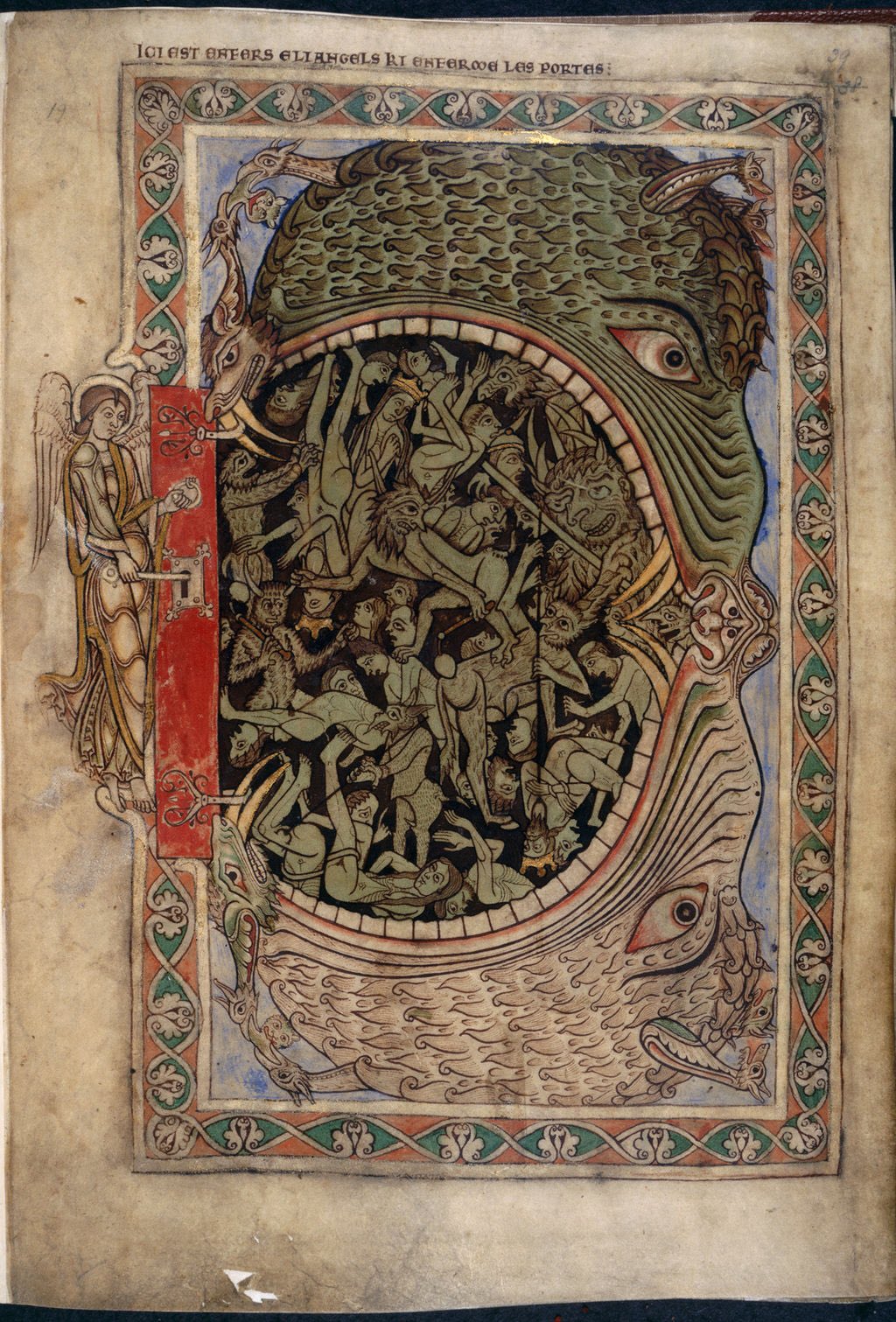

Instructor: Dr. Mo Pareles
Dr. Mo Pareles

Why did you choose this image to represent the course?
The Winchester Psalter Hellmouth conveys some of the compelling weirdness of early medieval English literature: check out the hungry bird-demons, the deposed monarchs, and the angel turning the key.
Why are you excited to teach the course?
The most exciting moment of the course for me is when students realize they can read a poem in the original Old English!
What can students expect from the course?
Students can expect active learning: there will be lots of group work and collaborative translation. The grade is based on class participation and preparation (40%), quizzes (40%), and a final exam (20%).
ENGL 386 Theory, Critique, Intervention and Dissent: Racial Capitalism in the Flesh
“You can’t have capitalism without racism,” originally sourced from Peter James Hudson on “The African Origins of Racial Capitalism.”

Instructor: Dr. Kimberly Bain
Dr. Kimberly Bain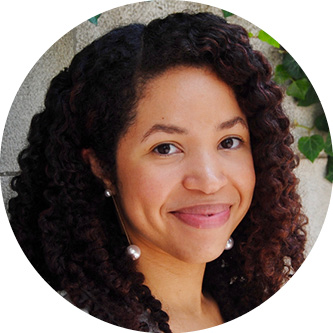

Why did you choose this image to represent the course?
Malcolm X said it best.
What are you most excited to teach in this course?
We’ll be diving into a range of texts—social, sonic, visual, literary, and so forth—to take up the question of how racial capitalism shapes our everyday lives. No two weeks will be the same!
What course work can students expect from this course?
Students will be completing a weekly reflection journal on an everyday object in their life, tracing its production and circulation across various themes—from labour, to material matter, to aesthetics. These weekly reflections will then be used to produce a portfolio for the class as the final assignment.
ENGL 393 Unacknowledged Legislators: Agricultural Biotechnology and the Poetics of DNA
Digital illustration of DNA by Sangharsh Lohakare (February 2022).

Instructor: Dr. Nathan TeBokkel
Dr. Nathan TeBokkel

Why did you choose this image to represent the course?
Finding a representative image for this course was tricky because most pictures of agricultural biotechnology are privately owned, like the things that they represent—both of which this course examines. This course also explores genetic fundamentals, including concepts of a code, the book of life, letter-like symbols, and intricate yet no less imagined images like this.
Why are you excited to teach the course?
Everything! I’m eager to introduce students to cutting-edge science, new literature, and the tools of science and technology studies and ecocriticism. Most of all, I’m curious about what experiences students have had with food, farms, and biotechnology, and I look forward to our class discussions.
What can students expect from the course?
We’ll read excerpts from landmark biotechnology legislation, including the Organization for Economic Cooperation and Development’s first safety evaluation, as well as prognoses from the National Academy of Sciences. We’ll evaluate their language with the help of literary theory, two novels (Ruth Ozeki’s All Over Creation and Margaret Atwood’s Oryx and Crake), and a long poem written by genetically modified bacteria (Christian Bök’s Xenotext). Students will write a short position paper, a research paper, and a midterm.
ENGL 390 “Who Tells Your Story?” Power and Disruption in Contemporary Auto/biography
“Write Your Truth” window display at Vancouver Pen Shop. Photo by Laurie McNeill.

Instructor: Dr. Laurie McNeill
Dr. Laurie McNeill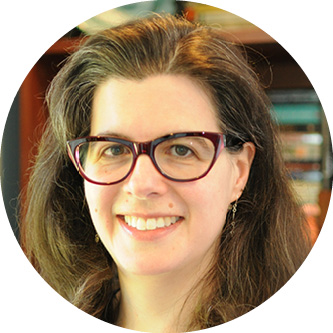

Why did you choose this image to represent the course?
When I saw this window installation, featuring a giant pen and the slogan “Write your truth” on the back of a dress, I thought it quite wonderfully captured two ideas central to this course. The first is the radical promise of auto/biography – how the act of picking up a pen and writing your “truth” could be powerful and transformative; the second is the ways that such promise can be constrained or exclusive, open to question and critique, and co-opted to serve other interests (to sell books, if not pens).
Why are you excited to teach the course?
I’m excited to think about how auto/biography works in different forms, including unexpected places, such as in theatre, comedy, and comic books, as well as in more traditional memoir. I call such instances “stealth auto/biography,” because audiences may not be expecting testimony or personal narratives, but the author sneaks it in!
What can students expect from the course?
Our class will build on the shared production of knowledge. Students will be contributing their ideas regularly through both in-class discussion and online blogs or discussion posts, and working with each other in both peer-review and collaborative activities. Our formal assignments will include a paratextual study and a traditional research paper or autoethnographic analysis. In these assignments students will be able to choose their own topics and approaches.
ENGL 395 The Hatred of Poetry (or Poetry and/in Crisis)
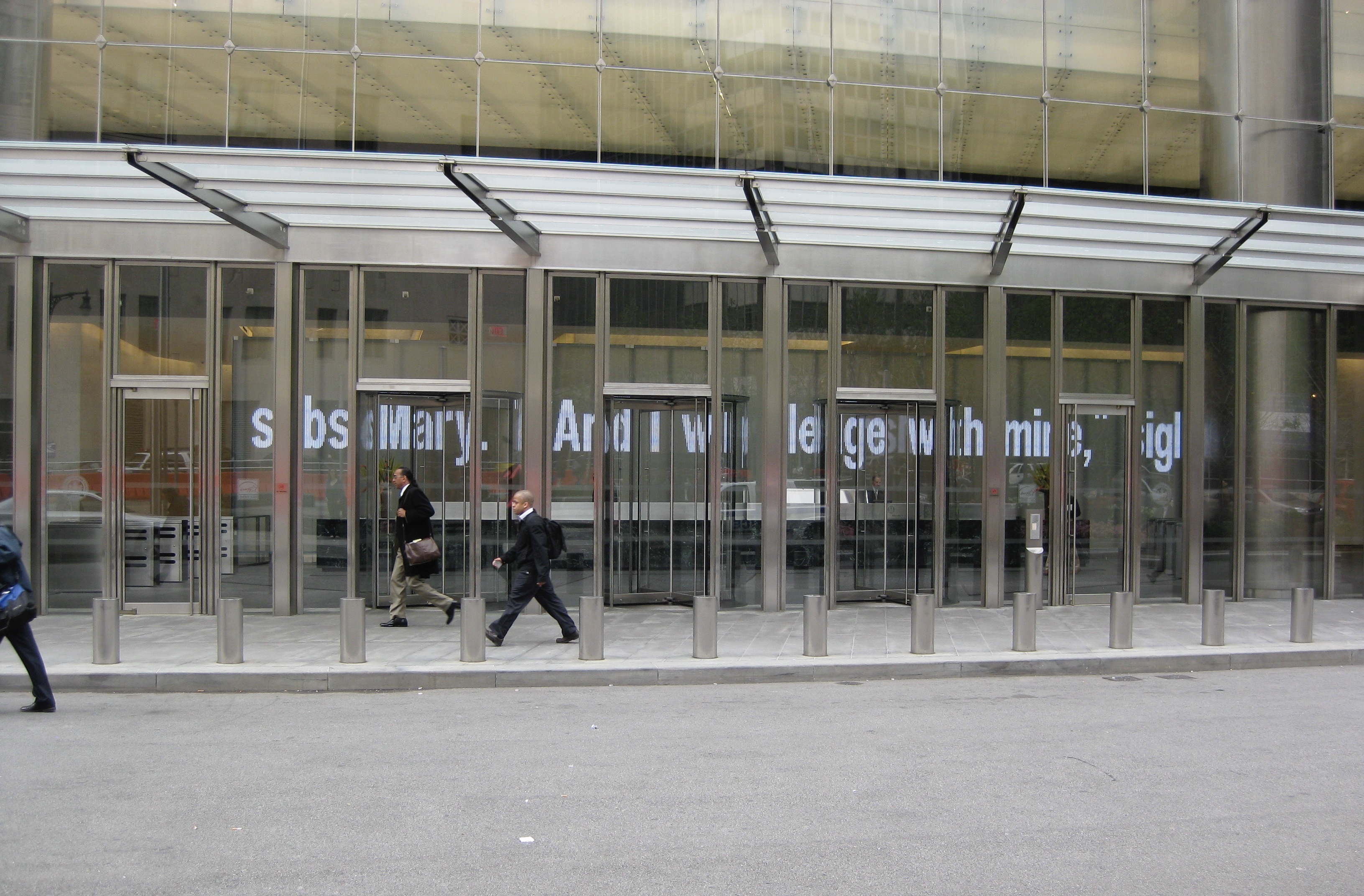

The office tower at 7 World Trade Center in New York. The windows feature an installation of selected poetry by the artist Jenny Holzer and shows poetry as a public response to the terrorist attacks of 9/11. Photo by Moberley Luger.
Instructor: Dr. Moberley Luger


Dr. Moberley Luger
Why did you choose this image to represent the course?
I took this picture in front of the office tower at 7 World Trade Center in New York. It features an installation of selected poetry by the artist Jenny Holzer and shows poetry as a public response to the terrorist attacks of 9/11.
Why are you excited to teach the course?
I love talking openly and honestly about widely held attitudes toward poetry. If you love it, why? If you hate it (many people do!), why? How can we use our critical tools to examine not just poems but the way they live in the world?
What can students expect from the course?
We will read poetry and short essays about poetry; we’ll also read a novel and watch a movie. We will do some short reflective and analytical writing throughout the term and work toward a final paper. This is not a creative writing class, so you will not be asked to write any poetry; however, there will be opportunities to be creative and have candid conversations about poems and their circulation.
